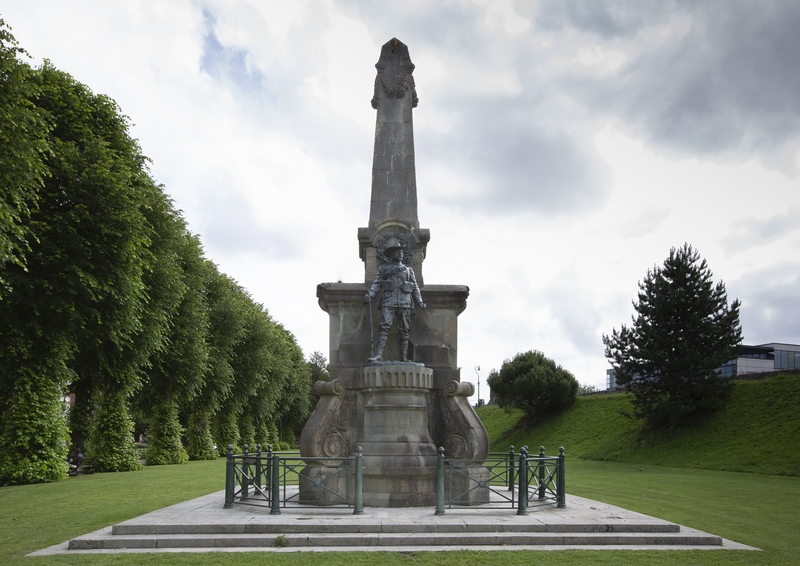
Harrow on the Hill War Memorial 1921
William Douglas Caröe (1857–1938)
William Douglas Caröe [also known as W.D. Caröe] was born in Blundellsands, near Liverpool, England, on 1 September 1857. His father was the Danish consul in Liverpool. After studying at Trinity College, Cambridge from 1875 to 1879, Caröe was articled to Edmond B. Kirby (1838-1920) in 1879-80, and to the church architect John Loughborough Pearson (1817-1897) from 1881 to 1883. During his time with Pearson, Caröe worked on drawings for Truro Cathedral. Caröe set up his own independent practice in London in 1883. He was in partnership for a period with J.H. Christian with whom he designed The Paddock in Leopardstown, Co. Dublin (1885) and Hanover Schools in Gilbert Street, Grosvenor Square, London (1889). In addition to his work with Christian, Caröe was also in partnership with Herbert Passmore (1868-1966) from 1903.
Caröe's secular work included various, schools, banks, shops, offices flats, and country houses, including boarding houses, Wycombe Abbey School, High Wcombe, Buckinghamshire (1898-1902); Martins Bank. junction of Brunswick Street and Castle Street, Liverpool (1890-94); alterations to South Lychett Manor, Lychett, Dorset (1900-04); Coleherne Court, Old Brompton Road and Redcliffe Gardens, Kensington, London (1901-1903); Church Commissioners' offices, Westminster, London (1903); 37-43 Park Street, Mayfair, London (c.1903); new buildings for Trinity and Pembroke colleges, Cambridge (1905-07); Main Building, University College of South Wales and Monmouthshire, Cardiff, now Cardiff University (1905-09); and St. Edward's House, Great Smith Street, Westminster, London (1906).
Following World War One Caröe was commissioned to design a number of war memorials including for Church of St Peter and St Paul, Cromer, Norfolk (1919-21); Stoke by Nayland, Suffolk (c.1920); Harrow on the Hill , Middlesex (1921); and Barrow upon Soar, Leicestershire (1921). He also designed a Boer War memorial to the Buffs and Royal East Kent Imperial Yeomanry for Dane John Gardens, Canterbury, Kent,
Caröe exhibited at the Royal Academy in London, the Royal Scottish Academy in Edinburgh, the Glasgow Institute of the Fine Arts, and at the Walker Art Gallery in Liverpool. He was elected a Fellow of the Royal Institute of British Architects (FRIBA) in 1890 and was President of the Architectural Association in 1895-96. He became a member of the Art Workers Guild (AWG) in 1889.
Caröe was the author of several publications including Sefton (1893) and King's Hostel, Trinity College, Cambridge (1909) and The Importance of the Historical Buildings of Cyprus (1931). He also edited ‘Tom Tower’, Christ Church, Oxford: some Letters of Sir C. Wren to J. Fell (1923).
After retiring Caröe moved to Cyprus. He died in a house he had built for himself in Kyrenia, Cyprus, on 25 February 1938.
A biographical file on William Douglas Caröe is available on request from the Enquiry Desk, Royal Institute of British Architects Library, London.
Text source: Art History Research net (AHR net)
Text source: Art History Research net (AHR net)




